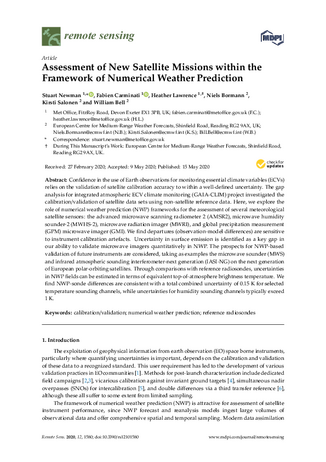Confidence in the use of Earth observations for monitoring essential climate variables (ECVs) relies on the validation of satellite calibration accuracy to within a well-defined uncertainty. The gap analysis for integrated atmospheric ECV climate monitoring (GAIA-CLIM) project investigated the calibration/validation of satellite data sets using non-satellite reference data. Here, we explore the role of numerical weather prediction (NWP) frameworks for the assessment of several meteorological satellite sensors: the advanced microwave scanning radiometer 2 (AMSR2), microwave humidity sounder-2 (MWHS-2), microwave radiation imager (MWRI), and global precipitation measurement (GPM) microwave imager (GMI). We find departures (observation-model differences) are sensitive to instrument calibration artefacts. Uncertainty in surface emission is identified as a key gap in our ability to validate microwave imagers quantitatively in NWP. The prospects for NWP-based validation of future instruments are considered, taking as examples the microwave sounder (MWS) and infrared atmospheric sounding interferometer-next generation (IASI-NG) on the next generation of European polar-orbiting satellites. Through comparisons with reference radiosondes, uncertainties in NWP fields can be estimated in terms of equivalent top-of-atmosphere brightness temperature. We find NWP-sonde differences are consistent with a total combined uncertainty of 0.15 K for selected temperature sounding channels, while uncertainties for humidity sounding channels typically exceed 1 K.
Title
Assessment of New Satellite Missions within the Framework of Numerical Weather Prediction
Authors
Stuart Newman, Fabien Carminati, Heather Lawrence, Niels Bormann, Kirsti Salonen and William Bell
Published
by Remote Sensing (RS) at 2020-05-15
Abstract
